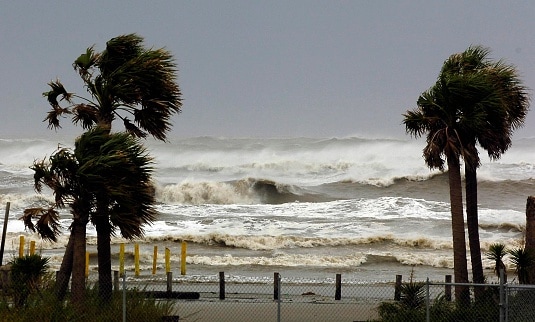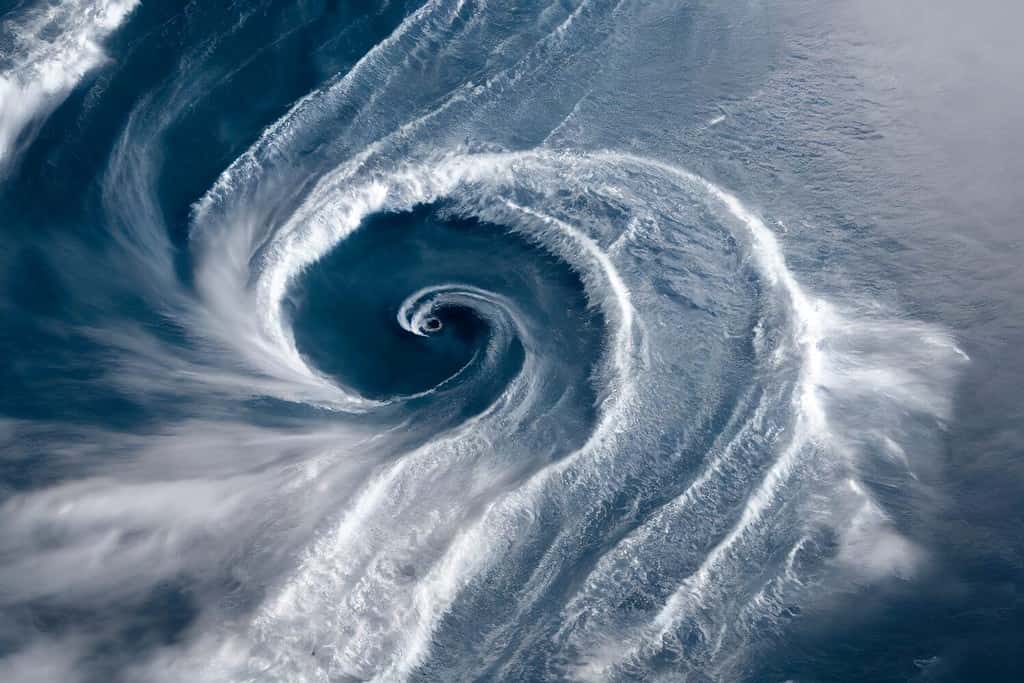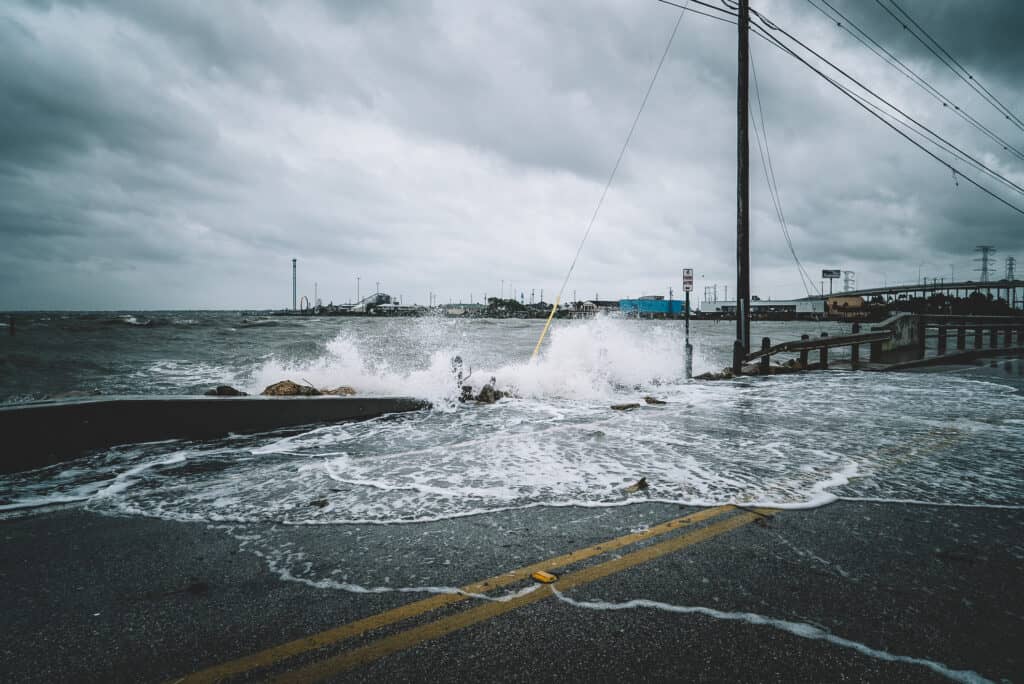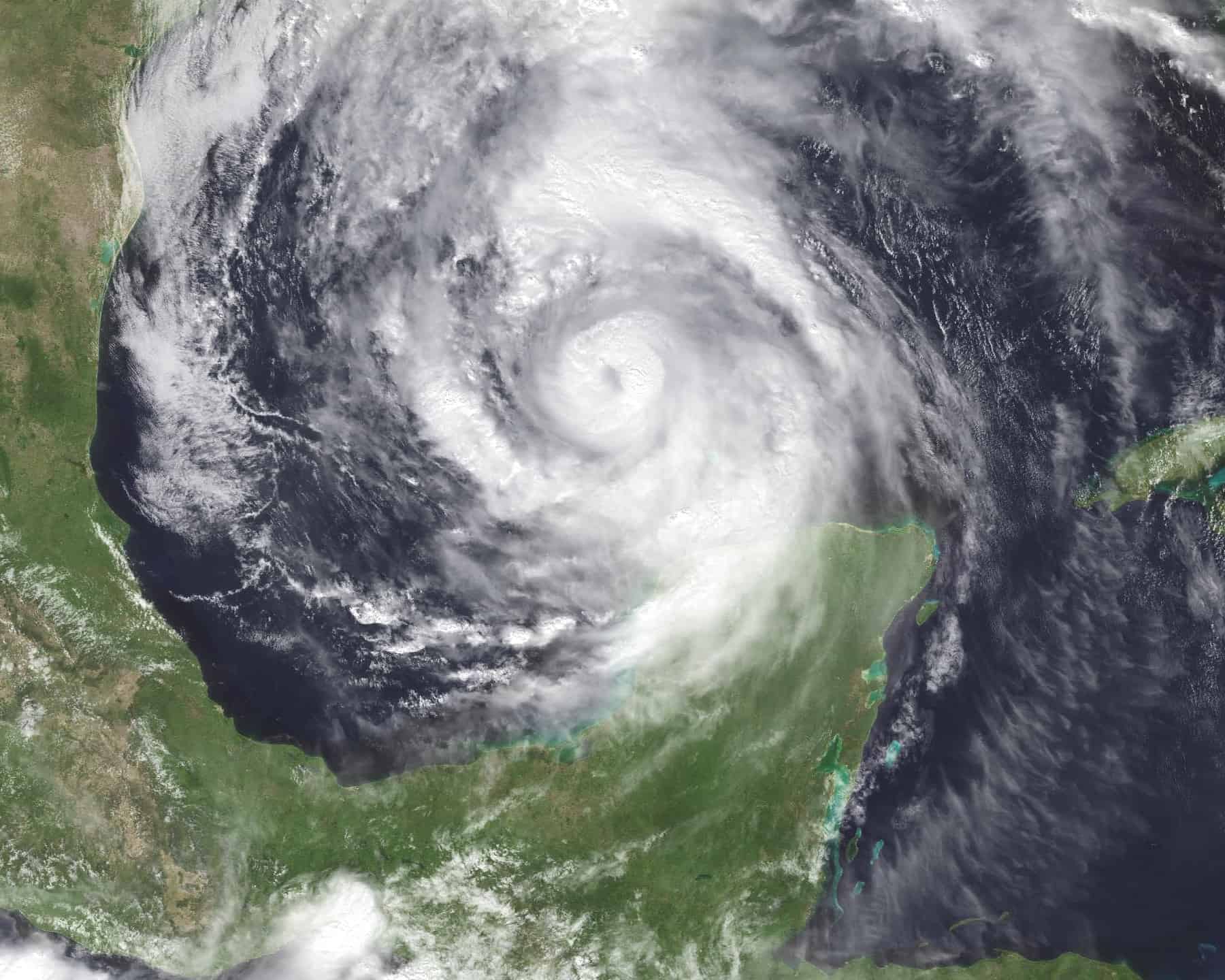While Florida ranks as the top state for hurricanes to hit in the U.S., Texas doesn’t trail far behind. In fact, according to Finder.com, Texas is the second-most state hit by hurricanes with over 22% of all hurricanes that hit the U.S. making landfall in Texas. Because of its size and location related to the Atlantic Ocean and the Gulf Coast, Texas remains a hefty target for tropical storms forming in the open ocean.
Hurricane season in Texas spans from the beginning of June to the end of November. On average, the month with the most potential for a hurricane to hit Texas is August.
So, between June and November, how do you handle hurricane season in Texas? Read on to discover the top things to know about how and when the hurricane season in Texas ends.
Understanding Hurricane Season in Texas

Texas weather includes hurricanes, thunderstorms, hail, and more.
©Pierre Rebollar/Shutterstock.com
Texans are no strangers to bad weather. For a state that takes up so much land, its extreme weather runs the gamut of droughts, severe thunderstorms, tornadoes, blizzards, hail, and hurricanes. However, as the climate continues to shift, so does the mental health of Texan people.
The Effect of Hurricanes on Texans
According to the Texas Tribune’s primary research, the fallout from major weather events like hurricanes brings significant hardship and stress onto those in affected areas. Studies conducted amidst the aftermath of Hurricane Harvey in 2017 revealed a startling revelation: 46% of the participants from Houston were observed to exhibit symptoms suggestive of probable PTSD. Furthermore, over half of the 41 survivors who were closely examined in the research displayed signs of anxiety.
As mentioned above, the official start of the Atlantic basin’s hurricane season is June 1 and stretches until November 30. However, based on the Texas coast’s location and weather, the most likely time for hurricanes to make landfall in Texas is late summer to mid-fall. While Texans can enjoy the early months of school vacation with relative safety, they should prepare their disaster and evacuation kits in the event of a late-summer hurricane hit.
Texas’ Hurricane Season and Major Factors
The location of Texas predicates the landfall of hurricanes for a few reasons, including:
- It’s on the coast bordering where Atlantic Ocean hurricanes form.
- The Gulf of Mexico’s warm waters can produce hurricanes much easier than colder waters.
- Higher-than-average sea surface temperatures.
- Weaker tropical Atlantic trade winds.
- Decreased vertical wind shear.
All these factors contribute to a busy hurricane season in Texas that usually winds down around October.
According to the National Hurricane Center, Texas weathers about 14 named storms, seven tropical storms to low-grade hurricanes, and three major (Category 3 or above) hurricanes during a typical hurricane season. The average figure ran true for 2022, which brought exactly 14 named storms. However, not a single hurricane made landfall in Texas: a welcome respite for many. The year before, in 2021, Texas saw above-average activity and landfall. Twenty-one named storms barrelled toward the state, seven of which were hurricanes. Of those seven, the National Oceanic and Atmospheric Administration (NOAA) categorized four as major hurricanes.
When Does Hurricane Season End in Texas?

The threat of hurricanes looms over Texas between May and November.
©stefanofiorentino/iStock via Getty Images
The official end of the hurricane season in Texas is November 30.
Historically, not many systems fall outside of the Atlantic hurricane season which causes significant damage — especially in Texas. If a hurricane does fall outside of the accepted window, it’s most likely happening in May. In fact, only one system in the last 100 years that made landfall in Texas fell outside of the season: an unnamed tropical depression with sustained winds of 35 miles per hour between May 21 and May 26 in 1936.
The second most likely month for a storm to form and make landfall outside of the regular hurricane season is December. Most happen in early December and fizzle out in the ocean before reaching land. However, a few in the last 50 years have traveled to the United States with statistically-significant sustained winds.
- In 1984, Lili, a Category 1 hurricane, hit Hispaniola between December 12 and 24.
- In 1989, Karen, a tropical storm, hit Cuba between November 28 and December 4.
- In 2003, Odette, a tropical storm, hit Hispaniola between December 4 through 7.
- In 2007, Olda, a tropical storm, hit the Greater Antilles between December 11 and 12.
The Five Latest Hurricanes and Tropical Storms to Impact Texas

Hurricanes frequently cause tornadoes and can bring over six feet of rain.
©Vikks/Shutterstock.com
While 2022 didn’t see any hurricanes make landfall in Texas, 2021 and the year before brought some tough storms for the Lone Star State to weather.
Hurricane Nicholas (2021):
Described as a slow and erratic Category 1 hurricane, Hurricane Nicholas made landfall in Texas near in
Sargent Beach on September 14, 2021. Nicholas was the sixth hurricane to hit the U.S. from the 2021 Atlantic hurricane season, originating from a tropical wave.
The storm officially hit land shortly after midnight, exposing coastal Southeast Texas to gusty winds and causing power outages for nearly half a million residents. Additionally, the storm’s rainfall resulted in several inches of precipitation on the Southeast Texas Gulf Coast and barrier islands, leading to flash flooding.
As Nicholas weakened and moved slowly towards Louisiana, the Gulf Coast towns discovered minimal damage upon waking. A meteorologist in League City stated that the coastal areas around Galveston received between six and nine inches of rain while Harris County, including Houston, saw rainfall between three and six inches. Deer Park recorded 9.85 inches of rain.
The damage in Galveston and surrounding areas primarily involved debris and flooding in the usual flood-prone parts of the town. Thankfully, Hurricane Nicholas didn’t cause significant injury or harm to Texas.
Tropical Storm Beta (2020):
Tropical Storm Beta formed in the Atlantic hurricane season of 2020 and made landfall near the Matagorda Peninsula, Texas, in late September 2020.
Beta brought heavy rainfall and the potential for flooding to parts of the Texas coast. Some areas experienced storm surges and strong winds as the storm moved ashore. The extensive rainfall raised concerns about flash flooding and river flooding, leading to several waterways overflowing their banks. Some areas experienced road closures, property damage, and the need for water rescues.
Despite not reaching hurricane status, Beta’s slow movement led to prolonged rain, exacerbating the flooding situation. The storm’s impact was a reminder of how tropical storms, even when not classified as hurricanes, can still pose serious risks to life and property, particularly through heavy rainfall and flooding.
Hurricane Laura (2020):
In Texas, the impact of Hurricane Laura was mainly felt in the southeastern regions near the border with Louisiana. Areas such as Orange, Texas, and the surrounding communities experienced strong winds, heavy rainfall, and storm surge. While Texas did experience some damage to structures and infrastructure, it was not as severe as what Louisiana endured.
Hurricane Hana (2020):
Hurricane Hanna made landfall in Texas on July 25, 2020, as a Category 1 hurricane near the town of Padre Island. The storm had a notable impact on the southern part of the state, particularly in areas along the Gulf Coast.
Hanna brought strong winds, heavy rainfall, and storm surges, leading to significant damage to properties, infrastructure, and vegetation. Coastal communities experienced flooding and erosion due to the storm surge, while inland regions faced the risk of flash flooding and river flooding from the intense rainfall.
Some areas were hit hard by the hurricane’s impact, resulting in power outages, road closures, and disruptions to essential services. Emergency responders and volunteers worked diligently to conduct water rescues and provide aid to affected communities.
The agricultural sector was also significantly affected, as the storm’s high winds and heavy rains damaged crops and livestock in some areas.
Hurricane Hanna’s impact highlighted the importance of preparedness and early warning systems in coastal regions prone to tropical storms and hurricanes. It served as a reminder of the need for resilience and the importance of community support in the face of natural disasters.
Tropical Storm Imelda (2019):
Tropical Storm Imelda made landfall in Texas on September 17, 2019, and had a significant impact on the state, particularly in the Houston metropolitan area and its surrounding communities.
Imelda brought torrential rainfall to the region, leading to widespread and severe flooding. Some areas received more than 40 inches (about 102 cm) of rain in just a few days, causing many rivers and creeks to overflow their banks. The intense and prolonged rainfall resulted in the rapid inundation of streets, homes, and businesses, catching many residents off guard.
The flooding caused by Tropical Storm Imelda led to water rescues, road closures, and disruptions in transportation and infrastructure. Many homes and properties were damaged, and numerous residents were displaced from their homes. The storm’s impact was reminiscent of the devastation caused by Hurricane Harvey in 2017, which was one of the most destructive hurricanes in Texas history.
Tips for Preparing for Hurricane Season in Texas

Water crashed over many bridges during 2017 Hurricane Harvey in Kemah, Texas, flooding roadways quickly.
©iStock.com/Eric Overton
When you know a hurricane or tropical storm will hit your area, you need to already be prepared. Get ahead of the game by preparing for hurricane season early so you can brave the storms with confidence until November ends.
Some best practices when preparing for hurricane season in Texas include:
- Have an evacuation plan. Evacuation isn’t always a possibility, but have a plan for when it is so everyone knows where to gather and how to get to safety.
- Protect your most valuable items. Including documents, special items, and keepsakes, have a waterproof place for the most important possessions you own — or copies of those documents if the originals become damaged.
- Listen to the radio and emergency lines. Download the FEMA app or have a police scanner handy if you don’t have access to an emergency phone in your kit.
- Flood-proof your home. This includes getting flood insurance and knowing how and where a flood would cause the most damage to your house.
- Create a disaster kit. Include items for your entire household (like the elderly and pets!) that will keep you going for at least three days. Food rations, water, tools, safety items, and medical supplies should go in this emergency evacuation “go bag.”
Stay Safe and Dry Until December
While Texas isn’t the number one state for hurricane landfall, it comes in at a close second. For the months of June through November, residents and visitors should prepare themselves and their homes for a potentially devastating hurricane.
As evident from the history of hurricanes in Texas, the season can sometimes extend beyond its typical timeframe, making it essential to remain vigilant until the official end date. By staying up-to-date with the latest weather forecasts and heeding advice from local authorities, individuals can better navigate the challenges posed by these powerful natural phenomena.
If you’d like to learn more, discover the worst hurricanes to ever hit Florida, or learn more about hurricane season in Texas.
Thank you for reading! Have some feedback for us? Contact the AZ Animals editorial team.








